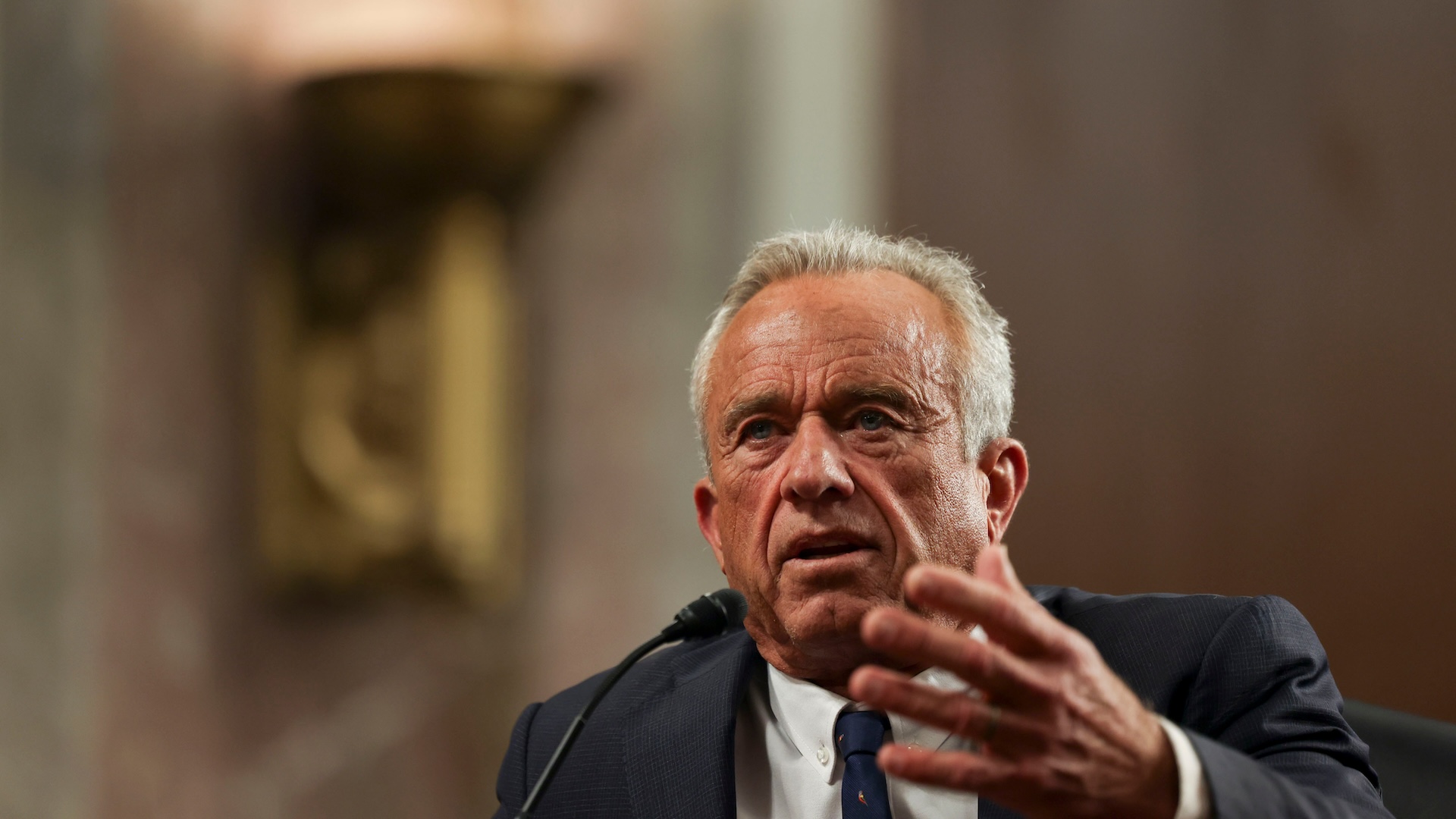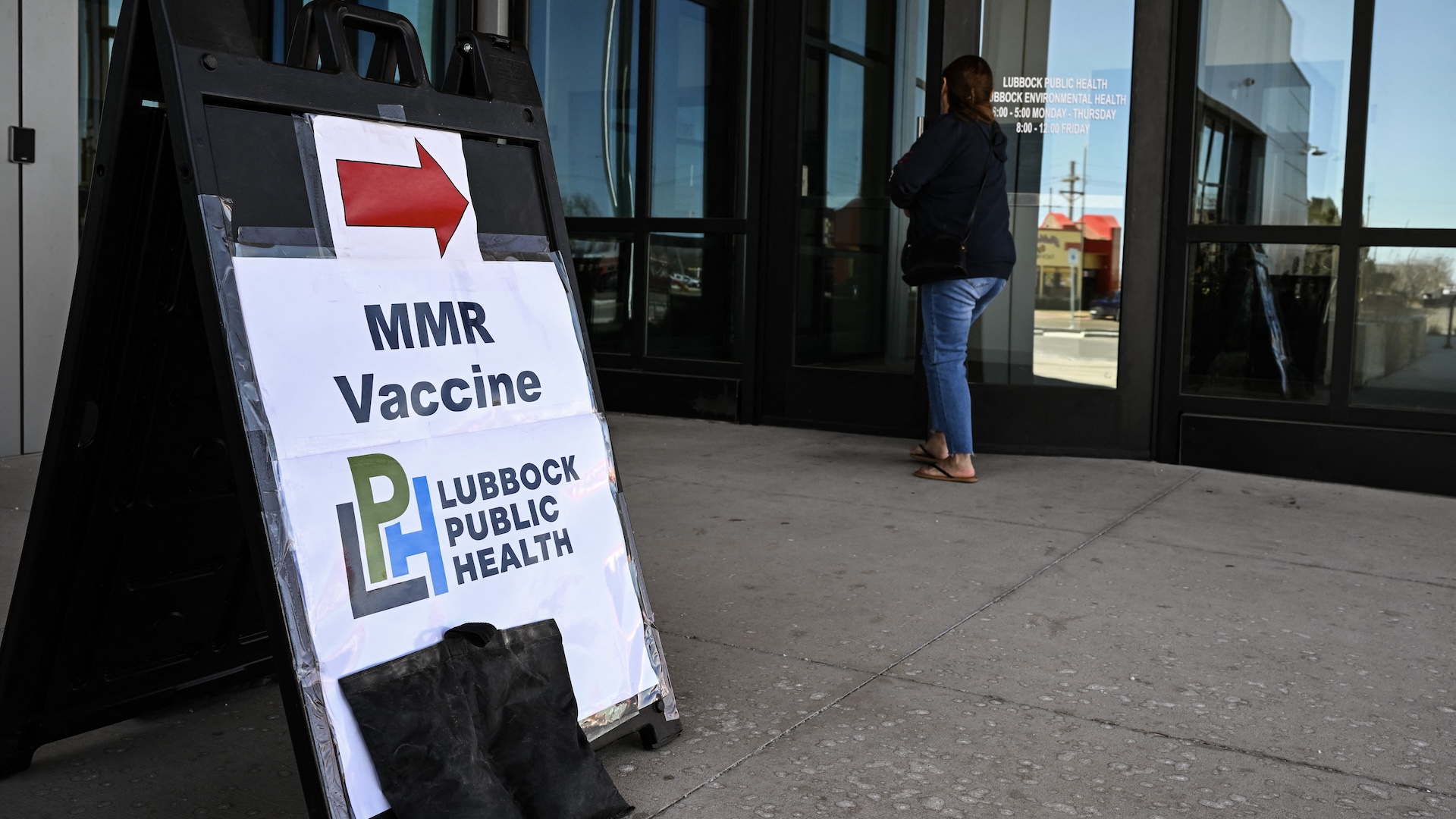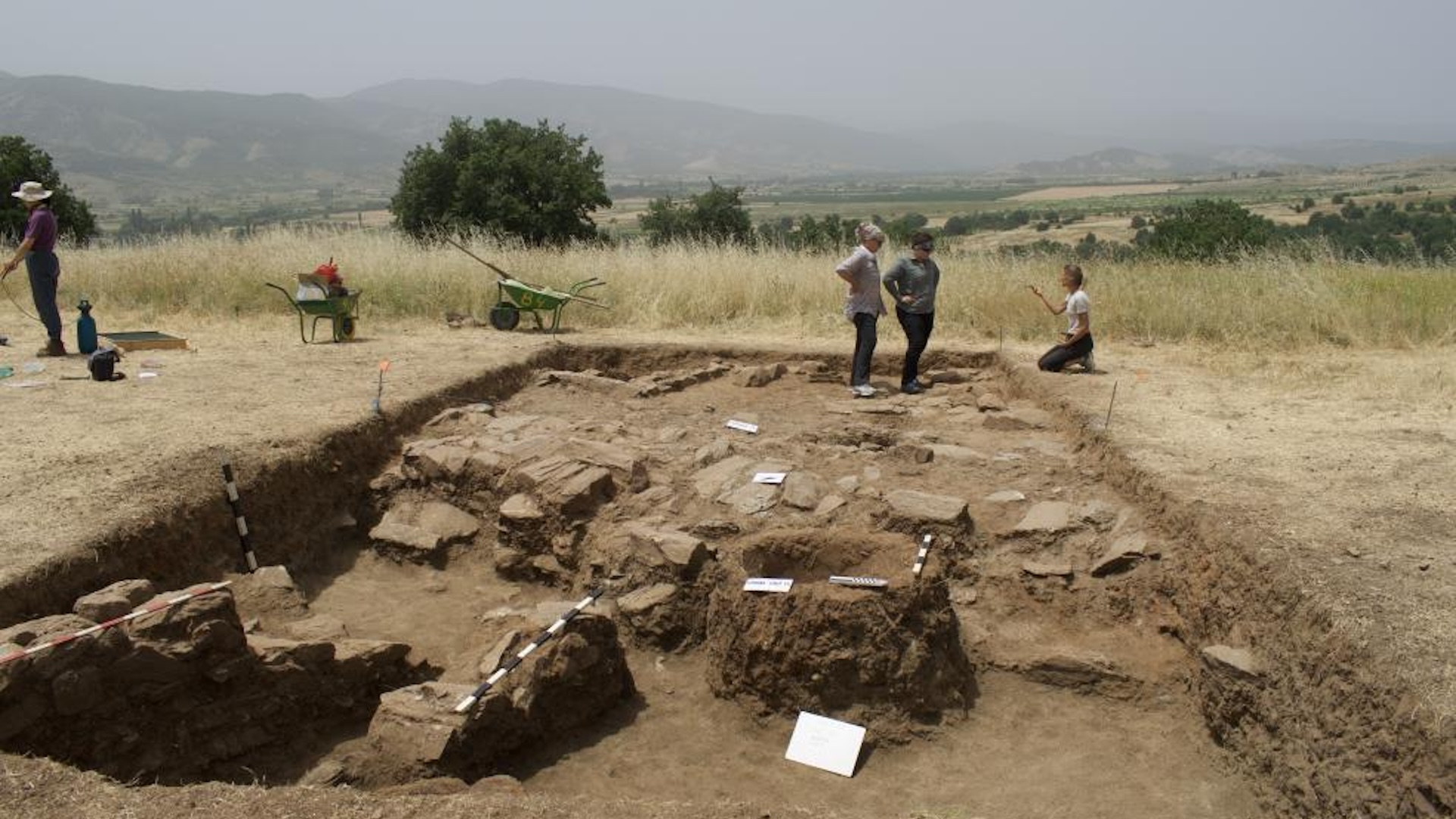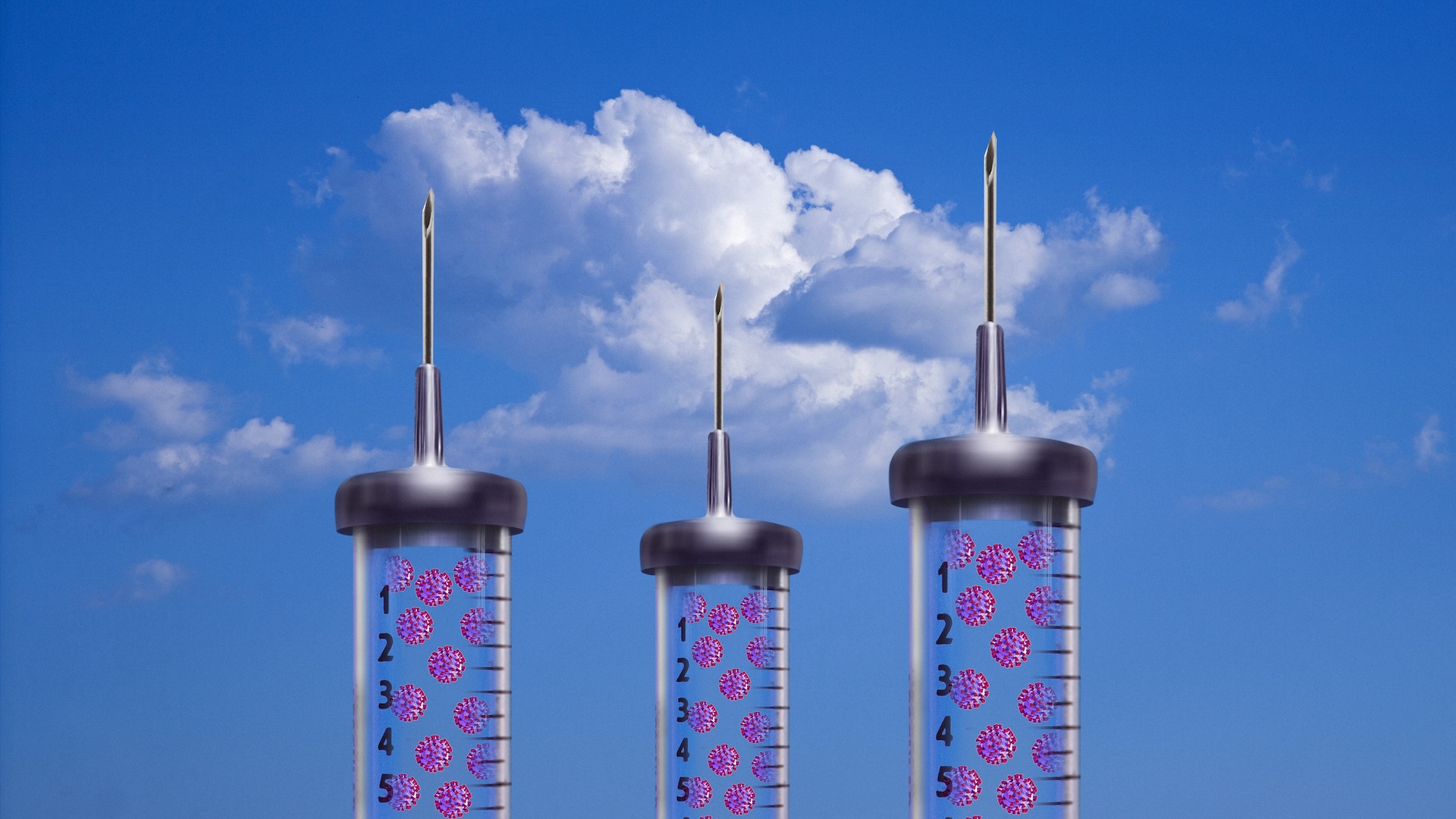When will the US measles outbreak end?
A public health official in Texas recently warned that the state's ongoing measles outbreak could last a year. Why are cases expected to keep rising?

The current measles outbreak in the U.S. may last a full year, a public health official in Texas recently warned.
As of April 4, nearly 610 measles infections have sickened people across 22 jurisdictions in the U.S. this year, according to the Centers for Disease Control and Prevention (CDC). That's more than double the total number of measles cases reported for the whole of 2024. What's more, additional cases have been reported by various local jurisdictions but have yet to be confirmed by the CDC and added to its official count.
So far, 12% of the CDC-confirmed cases have led to hospitalization, and in February, an unvaccinated, school-age child in Texas died of the infection, making them the first person to die of measles in the U.S. since 2015. Another death was reported in New Mexico, again in an unvaccinated individual, and the case is being investigated by officials to confirm its connection to the outbreak. And in April, a second school-age child in Texas died of measles complications, local authorities reported.
Most of the confirmed cases have been tied to six outbreaks of measles, including a large one in West Texas. Of states reporting measles infections, Texas has seen the majority of cases so far this year. And recently, Katherine Wells, the director of public health for Lubbock, Texas, expressed concern that the state's current outbreak may be far from over.
"We are still on the side where we are increasing the number of cases, both because we're still seeing spread and also because we have increased testing capacity, so more people are getting tested," Wells said in a press briefing on March 18, according to STAT News. "I'm really thinking this is going to be a year long in order to get through this entire outbreak."
While Wells specified a potential timeline for the outbreak, other experts are reluctant to estimate exactly when it will end.
Sign up for the Live Science daily newsletter now
Get the world’s most fascinating discoveries delivered straight to your inbox.
"Unfortunately, it is not possible to predict how long the current outbreak of measles in Texas and the adjoining states will last," Dr. Charles Prober, a professor of pediatrics, microbiology and immunology at Stanford University, told Live Science in an email.
So far, case rates are showing no signs of slowing down. Why is that, and how hard is it to control a measles outbreak of this scale?
Reining in control
Numerous factors are needed to control a measles outbreak. These include ensuring that as many people as possible are vaccinated against the disease to build up the population's immunity; and making sure that new cases are detected, isolated and treated promptly, to prevent the disease from spreading.
New cases include those imported when infected individuals enter the country from parts of the world where the disease is prevalent; this can happen when someone from the U.S. vacations in a measles-endemic country and then returns home, for instance.
"As with other communicable diseases, the goal is to detect and isolate cases quickly to prevent further transmission to susceptible individuals," said Gabriel Benavidez, an assistant professor of epidemiology at Baylor University in Texas. "This process requires significant personnel and public health resources, both of which are limited in rural counties in West Texas, making them especially vulnerable," he told Live Science in an email.
He added that "Gaines County, where the vast majority of current cases have occurred, does not have its own public health department, [while] the South Plains Public Health District, which oversees four counties in the region, was quickly overwhelmed by the scale of this outbreak." As of April 8, Gaines County has reported 328 cases of measles, while Terry and Lubbock — the next hardest-hit counties — are each reporting dozens of cases.

Short-term outbreak control measures
Rapidly isolating infected people is particularly important because measles is highly contagious. Measles is caused by a virus called Measles morbillivirus that spreads from one person to next via droplets in the air, which are released when an infected individual coughs or sneezes, for example.
On average, each person infected with measles can pass the disease on to between 12 and 18 others who are susceptible to the disease. By comparison, a person infected with seasonal flu would spread their illness to only one to two susceptible people. The ease with which measles spreads makes outbreaks harder to contain.
And because of how contagious measles is, "the usual prevention methods of isolation, thorough hand-washing, and social distancing may not be as effective at preventing infection," Dr. Robert Amler, the dean of the School of Health Sciences and Practice at New York Medical College, told Live Science.
Furthermore, because measles outbreaks are currently unfolding across multiple states, rather than in a single, isolated population, it could take a lot more resources to get it under control, Wells said at the March 18 press briefing.
Beyond Texas and New Mexico, measles cases have also been confirmed in Alaska, California, Colorado, Florida, Georgia, Kansas, Kentucky, Maryland, Michigan, Minnesota, New Jersey, New York, Ohio, Oklahoma, Pennsylvania, Rhode Island, Tennessee, Vermont and Washington. Again, most of the cases reported so far have been linked back to six measles outbreaks, defined as three or more related cases of the disease.
If an infected individual travels to another community with low measles-vaccination rates, they can spark new outbreaks beyond the states that are currently affected, Benavidez said. Preventing these cases from spilling into other communities is key.
Chasing herd immunity
In addition to isolating cases, another way of dealing with an outbreak is to make sure as many people as possible are vaccinated against the disease. If the vaccination rate for measles is more than 95% in a given community, then the number of new cases will be minimal, Prober said. This phenomenon is known as "herd immunity," in which enough of the population is vaccinated and therefore immune to the disease to prevent its circulation, even in those who are not vaccinated.
Herd immunity is important because it helps protect people in the community who are not eligible for the measles vaccine, Amler said. This includes babies who are too young to be vaccinated, as well as people with weakened immune systems, he said.
According to the latest statistics from the CDC, between 2020 and 2021, approximately 91% of children in the U.S. received at least one dose of the measles, mumps and rubella (MMR) vaccine by their second birthday, and 92% of adolescents ages 13 to 17 had received two doses of the vaccine. Two doses are recommended for maximum protection against measles; one dose of the shot is 93% effective against measles infection, while two doses are 97% effective.
However, a torrent of disinformation and misinformation about the measles vaccine may hinder efforts to control the outbreak, experts told Live Science.
This misleading information includes incorrect claims that the outbreak is linked to poor diet and health and that the MMR vaccine can cause autism — a widespread claim that has been categorically disproven by scientists over the years. Robert F. Kennedy, Jr., the current secretary of Health and Human Services, has historically sowed distrust of the measles vaccine and has recently promoted unproven treatments for measles, such as cod liver oil and vitamin A.
"Disinformation and misinformation play a major role [in reducing the ability to control the outbreak] because what is necessary to extinguish this outbreak is for people to use proven, evidence based counter measures," said Dr. Amesh Adalja, a senior scholar at the Johns Hopkins Center for Health Security.
"For measles, that countermeasure is the vaccine," Adalja told Live Science in an email. Ultimately, the best way to avoid measles infections, as well as the fatality or long-term health consequences they can cause, is to get vaccinated, experts say. Standard treatments for measles can alleviate people's symptoms and stabilize their vital signs, but they don't directly treat the disease.
Related: Kids infected with measles face long-term health consequences. Vaccines can prevent all of them.
There is no requirement for states to report to the federal government how many people have been vaccinated against measles, a spokesperson for the Texas Department of State Health Services (DSHS) told ABC News. Therefore, it can be difficult to tell what percentage of the population has been vaccinated and thus whether that key 95% threshold has been hit.
Vaccination rates do appear to now be on the rise, though. As of March 11, nearly 9,000 people in New Mexico — the second most badly affected state behind Texas — received the MMR vaccine since the start of the year. That's compared to 5,342 in the same time period last year, according to state figures. Meanwhile, in Texas, at least 173,362 people received a dose of the MMR vaccine between Jan. 1 and March 16 this year, an increase compared with the number of doses administered between the same dates last year, ABC News reported.
After a vaccination, it takes around two weeks for an individual to build up immunity to the measles virus. So a person would be considered fully vaccinated two weeks after their second dose.

The path forward
If the Texas outbreak continues for more than a year, it's possible that measles will no longer be considered "eliminated" in the U.S. According to the CDC, elimination means that a disease has not constantly circulated within the population for at least 12 months and that the population has a "well-performing" surveillance system to keep the disease in check. For a disease to be "eradicated," its transmission would have to be driven to zero worldwide, as is the case with smallpox.
Measles was declared eliminated in the U.S. in 2000, thanks to extensive vaccination efforts and enhanced measles control across the Americas at large. However, as the disease is still prevalent elsewhere in the world, outbreaks do still occur in the U.S. as the disease is occasionally imported from other countries. In 2024, for example, there were 285 confirmed cases of measles in the U.S., and in 2023, there were 59 cases.
There is still hope to rein in the current outbreak, provided that people get vaccinated. Otherwise, the virus will continue to infect susceptible individuals, Amler said. "If we can find them [vulnerable individuals] first and vaccinate them, the outbreak will stop."
It is also essential that local public health departments and their leaders are able to serve as trusted sources of medical information in their communities, Benavidez said.
"This is a challenge not only in Texas but across the country," he said. "Preventing future outbreaks will require rebuilding trust in public health, particularly among populations that are hesitant or skeptical about vaccines and other public health measures."
Building trust in the face of rampant misinformation isn't easy, he added. "That trust must be built through cultural sensitivity, understanding, and a genuine effort to engage with the reasons behind vaccine hesitancy — without this foundation, the risk of recurring outbreaks will remain."
Disclaimer
This article is for informational purposes only and is not meant to offer medical advice.

Emily is a health news writer based in London, United Kingdom. She holds a bachelor's degree in biology from Durham University and a master's degree in clinical and therapeutic neuroscience from Oxford University. She has worked in science communication, medical writing and as a local news reporter while undertaking NCTJ journalism training with News Associates. In 2018, she was named one of MHP Communications' 30 journalists to watch under 30. (emily.cooke@futurenet.com)
You must confirm your public display name before commenting
Please logout and then login again, you will then be prompted to enter your display name.
Flu: Facts about seasonal influenza and bird flu
What is hantavirus? The rare but deadly respiratory illness spread by rodents










